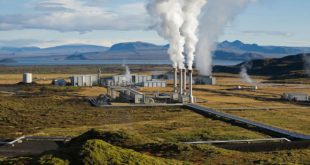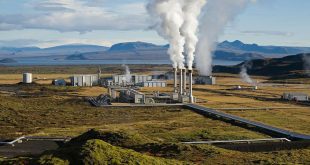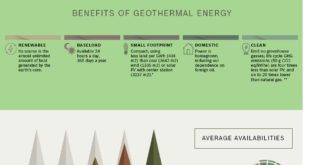
The Geothermal Energy Association (GEA) urges states to take advantage of the carbon emission reduction available through expanding geothermal power portfolios. Doing so makes sense in light of the US EPA’s proposed regulations for existing power plants that require states to substantially reduce carbon emissions. The regulations proposed June 2, 2014, would give states significant leeway in designing plans to reduce their emissions contributing to global warming, including adopting or strengthening policies to expand clean energy production, like geothermal power.
As a baseload source of clean energy, geothermal power is already helping to reduce the power system’s carbon emissions. GEA estimates that current geothermal energy production in the U.S. offsets about 14 million metric tons of CO2 from coal or 5 million metric tons from natural gas per year. The developing projects identified by GEA in April 2014, with estimated planned capacity additions of 978 MW, could help 11 states displace an additional 7 million metric tons of CO2 per year from coal or 2.3 million metric tons of CO2 per year from natural gas.
There is significant potential for geothermal power to expand its clean energy role, particularly in the West. Most of the nation’s geothermal resources are still undeveloped. The USGS estimates that “the electric power generation potential from identified geothermal systems is 9,057 Megawatts-electric (MWe), distributed over 13 states.” In addition, USGS concludes that “the estimated power production potential from undiscovered geothermal resources is 30,033 MWe.” Even in the three leading geothermal states, a majority of the identified resources are still untapped: 50% of California’s, 60% of Nevada’s, and 60% of Utah’s resources.
Geothermal power matches electrical power systems needs. It can provide baseload generation, allowing it to substitute for coal-fired power plants without raising reliability and related concerns. It can be engineered to provide a range of services not limited to baseload, including power regulation, load following or energy imbalance, spinning reserve, non-spinning reserve, and replacement or supplemental reserve.
The geothermal industry is committed to working with states to implement effective policies on a state by state basis to expand their geothermal production, including assistance and information on how to include geothermal in a §111(d) compliance plan under the EPA carbon regulations.
For more information about geothermal energy and climate emissions, including recent GEA reports, visit the GEA website at http://geo-energy.org/reports.aspx.
 Alternative Energy HQ solar power for homes, wind energy, and bio fuel issues
Alternative Energy HQ solar power for homes, wind energy, and bio fuel issues









